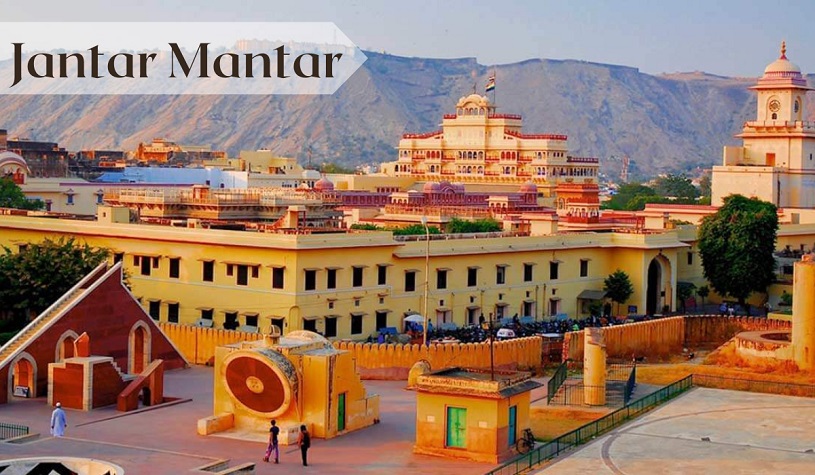Jaipur, also known as The Pink City, is a widely popular tourist destination. The city is blessed with some of India’s most beautiful and iconic monuments. Besides being home to several historically significant landmarks, Jaipur is also shrouded in abundant culture and traditions. From the city’s tourist sights to its bustling markets, delicious food and vibrant atmosphere, everything here tends to cater to your curiosity as a traveller. It also helps you understand the rich cultural heritage of India.
About Jantar Mantar
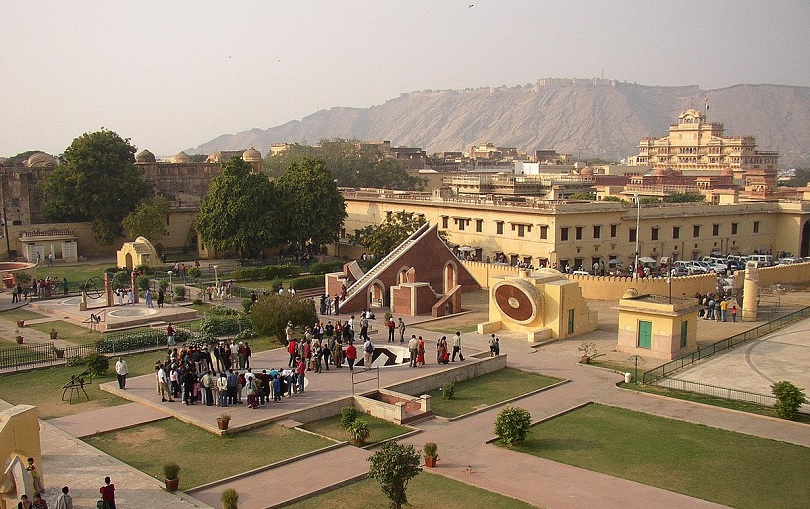
Jantar Mantar in Jaipur is one of the most famous tourist spots you should not miss if you are fascinated by astronomy and history. A UNESCO World Heritage site, this meticulously designed landmark showcases the astronomical skills and cosmological concepts of 18th-century India. Jantar Mantar is a collection of 19 monumental instruments used to observe and measure the positions of celestial bodies with the naked eye. There are numerous reasons why you should visit this unique structure of Jaipur. However, Jantar Mantar’s history, architecture and attractions top the list.
Jantar Mantar Ticket Price: Rs 50 (Indians) and Rs. 200 (Foreigners)
Jantar Mantar Timings: 9:00 AM To 4:30 PM
Jantar Mantar: History
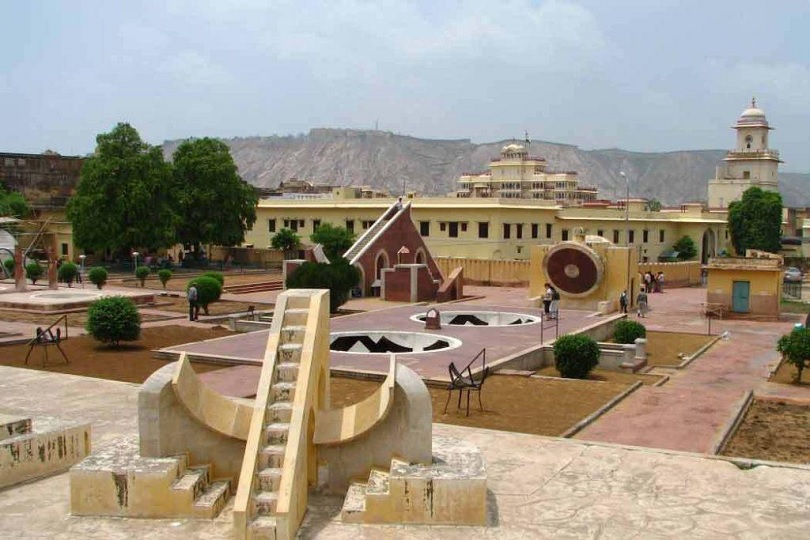
Jantar Mantar was built by Maharaja Sawai Jai Singh II, the founder of Jaipur and a keen astronomer, between 1728 and 1734. He was dissatisfied with the existing astronomical tables and instruments and wanted to create more accurate ones for his own use and the benefit of other scholars. He constructed five observatories in different cities, namely Delhi, Jaipur, Ujjain, Mathura, and Varanasi, but the one in Jaipur is the largest and best preserved.
Emperor Muhammad Shah entrusted Sawai Jai Singh II with correcting the astronomical calculations in Islamic zij tables. He collected astronomical data from Europe and Persia and analysed them carefully. Based on his thorough research and analysis, Maharaja Sawai Jai Singh II built stone instruments to observe and calculate the positions of celestial bodies and time.
Also Read: Best Forts in Jaipur
Jantar Mantar: Significance
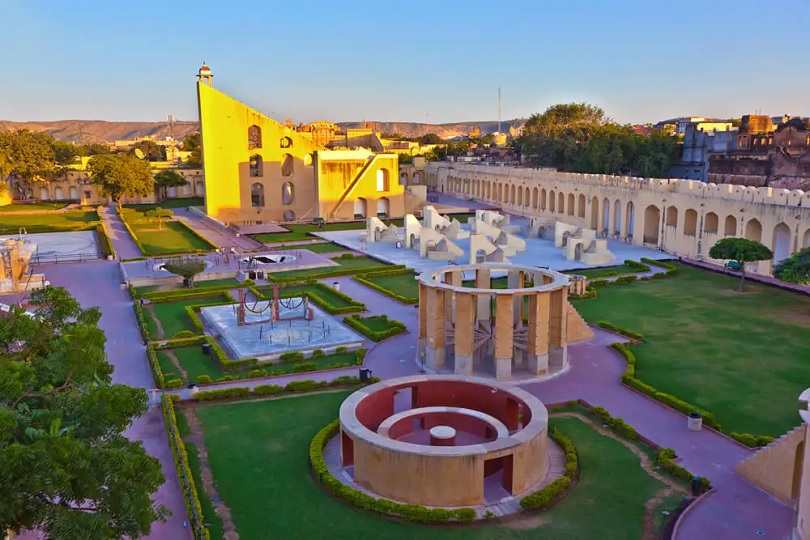
Jantar Mantar expresses India’s scientific and cultural achievements in the late Mughal period. It demonstrates the fusion of Ptolemaic positional astronomy with Hindu cosmology and the influence of Islamic and Persian astronomy. It also reflects the political and religious aspirations of Maharaja Jai Singh II, who wanted to assert his royal authority and legitimacy by controlling time and predicting celestial events. Jantar Mantar was a meeting point for different scientific cultures and traditions and a place where people could learn about the universe and their place in it.
Jantar Mantar: Architecture
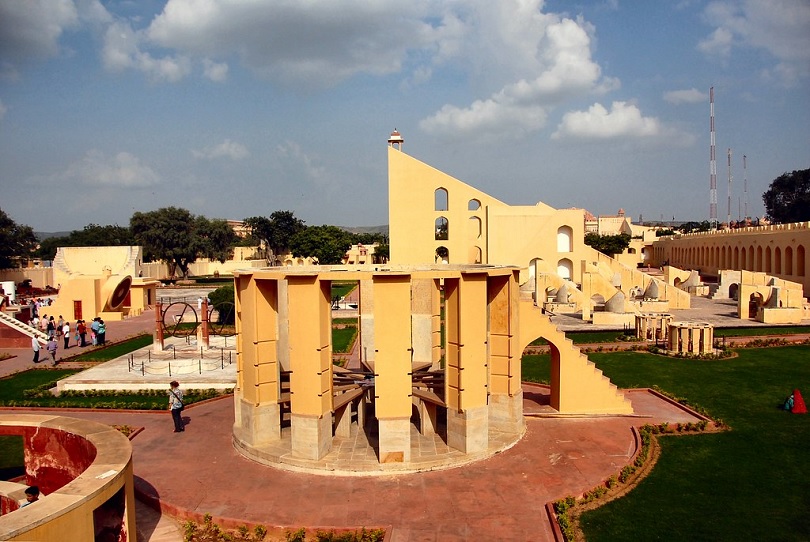
Jantar Mantar consists of 19 instruments made of stone, marble, plaster, and metal. They are designed to operate in three central celestial coordinate systems: the horizon-zenith local, equatorial, and ecliptic systems. Some are unique to Jantar Mantar, while others are adaptations or improvements of existing instruments. The instruments vary in size and shape, ranging from simple sundials to complex structures that resemble giant sculptures.
Some of the most notable instruments are Jantar Mantar Jaipur include:
- Vrihat Samrat Yantra: The largest instrument in Jantar Mantar is a 27 m-long equinoctial sundial that measures time with an accuracy of two seconds. This central instrument is the tallest sundial in the world.
- Laghu Samrat Yantra: A smaller version of Samrat Yantra, this instrument measures time with an accuracy of 20 seconds.
- Jai Prakash Yantra: A pair of hemispherical structures that represent the inverted sky and allow observing any point on the celestial sphere.
- Ram Yantra: A pair of cylindrical structures measuring celestial bodies’ altitude and azimuth.
- Kapali Yantra: A concave instrument that measures the coordinates of celestial bodies in the ecliptic system.
- Rashivalayas Yantra: A set of 12 instruments measuring the ecliptic’s zodiac signs.
- Digamsa Yantra: A pillar-like instrument that indicates the cardinal directions.
- Chakra Yantra: A circular instrument that measures the angular distance of celestial bodies from the ecliptic.
Jantar Mantar: Attractions
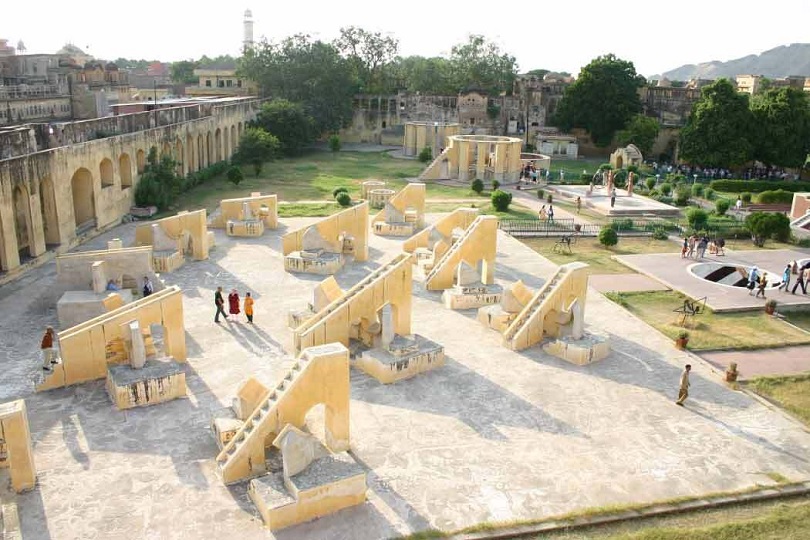
Jantar Mantar is not only a scientific marvel but also a cultural attraction that offers visitors a glimpse into India’s ancient wisdom and wonder. You can explore the instruments with the help of guides or audio tours or join special events such as sunrise or sunset observations. You can also admire the architectural beauty and symmetry of Jantar Mantar, which blends harmoniously with its surroundings. Attractions like City Palace and Hawa Mahal are also a part of the same complex and should not be missed.
If you plan to visit the marvels of Pink City soon, then make sure to book a stay at The Lalit Jaipur, one of the best 5 star hotels in Jaipur. Our prime amenities and luxury dining spaces offer you an experience unlike any other.
